When we discuss missed shots and what causes them, it's helpful to look at different golfers creating the miss in question.
You can watch Chuck recreate these misses again and again, but it's still always Chuck's swing. Watching other golfers, some of whom may have swings similar to yours, can make it easier to see what's going on.
Today we're going to look at a student's swing and talk about why he's pulling his golf shots. It may help you see some of the issues from a new perspective.
Although the student in this lesson is left handed, we've flipped the images so we can discuss it without getting our terms mixed up.

We'll compare the student's swing (left) with Chuck's (right)
This student tends to miss his shots to the left. A lot of golfers think that pulled shots are caused by swinging over the top. We'll see today that, while that is one possible cause, it's primarily the club face that causes any shot to go off line.
If the club face points left and your divot points right, the ball will still go left. Everything is a direct result of where the club face is pointing at impact.
There's been a big debate on the Forum about the exact moment of impact versus the compression that takes place a couple of milliseconds later, but leaving aside these technicalities, the fact is that as the ball leaves the face, the club face angle has a much greater influence on the direction of flight than the club's path.
The Swing is Actually Too Shallow
A lot of golfers misunderstand the role of the club face. They think if they're really pulling all their shots they must be swinging right over the top, but that's not necessarily the case.
As we'll see in this student's swing, a more common miss to the left is actually created by the closed club face resulting from a swing that is too shallow.

He has lost his spine angle & shifted to the right
At first glance, you might think that an overly shallow swing would be a good thing, since it comes from the inside. That's true up to a point, but you can still overdo it, and that's what we're here to discuss.
We'll start out by drawing some lines on the top and left side of the head and on the outside of the hips.
Notice that the first thing that happens as the golfer goes back is that his head stands way up. He loses his spine angle and makes a massive shift into his right side - kind of a Vijay Singh sort of move.
By the time he gets to the top, his head has moved several inches above the initial line and quite a bit away from the ball.
The important thing to understand here is that moving off the ball laterally shallows out your swing plane.
Isn't It Supposed to be Shallow?
Shallowing out the swing plane is a good thing for golfers who swing more upright and need to shallow it out at some point to avoid sticking the club straight in the ground.

Chuck's head and right hip have stayed on their lines
But as a Rotary Swinger, your arc is already shallow enough. You don't need to add anything to that or you'll end up coming too much from the inside.
Looking at Chuck's swing, we can see that his right hip stays on that line as he turns back. His head stays within the little box we've drawn, and he gets to the top without moving much from his address position.
Swinging around your body already makes the swing shallow enough. You get some spine tilt, and nothing else needs to happen. Anything you add to that is just going to exaggerate it.
- Standing up and losing your spine angle shallows out the swing plane.
- Shifting off the ball shallows out the swing plane.
- Swinging too flat or too early inside shallows out the swing plane.
All those things make the swing too shallow and cause you to come too far from the inside.
At some point you're going to realize, "I'm swinging so far from the inside and the balls are all going up to the right. That means I need to start to release the club face."
What you end up with is the classic push draw shot. There are two reasons you don't want that:
- It makes for a glancing blow, rather than getting a straight line impact with the ball.
- Your misses end up in both directions because you'll block it if you don't release it enough, and you can snap hook it if you release it too much. There's too much timing involved.
Stay Near Those Lines
You have to keep yourself close to those starting lines. Chuck's hips are very close to where they started at address. His head is very close to where it started at address. That's the essence of a Rotary Swing. You're rotating around your spine, not moving all over the place.
Our student golfer needs to keep that spine angle. He needs to keep his head in that box defined at address. He needs to keep the right leg braced and powerful on the way back, and maintain his spine angle.
The way he's positioned by the time he gets to the top means he's going to have to slide as he comes back down. Let's look at the 9:00 position.

Compare the student's position at 9:00 (left) with Chuck's (right)
When our student's arm is at about 9:00 his head is starting to get back down in that box, but notice how much his hip has moved laterally. Just a moment ago he was several inches away from that line and now, halfway down, he's already out in front of it.
That's a slide - lateral motion instead of rotation - and it's not what we're looking for in a Rotary Swing.
Looking at Chuck we see that there is some lateral movement, because he has to get his weight back on the left side, but he gets back down to that 9:00 position without moving a whole lot from where he was at address. His head stayed back on that line even though he's making an assertive move to get back to the left side.
The Slide Kills Lag
The student golfer has had to move several inches to get to this point. That's a problem because, as he's doing that, his arms are dropping and the club is coming down. His club ends up too shallow, and stuck behind him.
You can't slide that much and just keep your arms hanging there. They have to come down too, so you end up way out in front of the club with your arms and everything too far back behind you.
You're going to swing too shallow because you're standing too upright, with too much lateral movement. Your swing ends up really out of sync.

Compare the student's lag (left) with Chuck's (right)
Notice that this golfer has lost a lot of lag and a lot of club head angle on the way down. One of the angles we always check is the right forearm. When we draw some lines you can see that he's lost a lot of lag. We would still want to see at least 90° of lag at this point in the swing.
Looking at Chuck at the same point, we see that he's got a bit more than 90°, depending on how you measure it.

Broken down left wrist
Chuck still has plenty of lag here because he hasn't slid out in front of the golf shot. His swing came down in sync, even though he has moved into my left side.
His arms are moving in sync with his body, rather than getting trapped back behind it. He's not way out in front of the shot, so he doesn't have to cast it in order to make contact.
Because the student is continuing to move out in front of the ball, moving his impact position too far forward, he literally has to cast the club out to make impact. He would actually thin the shot if he didn't start to release it.
This is a very common cause of flipping - which this golfer does, coming into impact. He loses the angles and the left wrist really breaks down.
By comparison, Chuck maintains his lag, coming all the way down into impact with basically a 90° angle on the right forearm and the shaft, then a lot flatter at impact.
This swing is actually taken from the Hitting High video, so Chuck is trying to cast it a little in order to hit the ball higher. He's intentionally flipping it a through impact a little bit in order to release slightly earlier.

Chuck's lag approaching and through impact
Even releasing it earlier, he still has quite a bit of angle between the forearm and shaft. That's what we're looking for.
It's not that Chuck is holding onto that lag angle. He's just doing everything else correctly. That's the key.
You never try to maintain these angles unless you're hitting a stinger shot or something like that - a real specialty shot. In any normal shot, doing everything else correctly is all it takes to create and maintain lag.
The View From Down the Line
Let's take a look at these two golfers from down the line.
We'll see the same things we were talking about from face on - primarily the loss of the spine angle the club goes back - as well as a couple of new things.
Our student golfer starts out with a pretty good spine angle at address. He could use a bit more tilt at address, but it's not too far off. It looks like about a 28-31° angle. The ideal for a midiron is somewhere around 35°.

Compare the student's spine angle at address (left) to Chuck's (right)
He doesn't have a tremendous loss of spine angle at address, although he could definitely use a bit more. He could get a little more flex in the knees, etc., but that's not the main concern at the moment. Our focus right now is that miss to the left.
You may have noticed in the face on view that when you start to slap hinge that release and really flip it with the left hand breaking down, that also shuts the club face. That means that when you flip the club in an effort to get speed, you have to time it really well because it's going to want to shut the club face down. We need to take that right out of the swing.
Notice how the golfer stands up as the club works back. He gets really tall at address.
He's already moved outside, well above where his head was at address and he's lost everything. His spine angle, his right leg, his belt buckle - everything is almost vertical at this point.

The student stands up on the backswing moving away from the lines drawn at address
As Chuck's club works back his face and head stay on their lines. He maintains his spine angle and knee flex.
As you can see, Chuck's belt is tilted at this point. This is important. If you start to stand up you'll have very little angle in the hips. When that happens it's very easy for the right elbow to work out away from the body, the left arm to be a little high and the club to get across the line.
As soon as the club comes across that line, you're likely in big trouble because this encourages a swing that comes down too shallow and too much from the inside. You'll have the whole push and pull hook problem, depending on the club face angle at impact.
You don't want to get across the line, for sure, but standing up at address and getting your shoulders really flat makes it awfully easy to get that club way across the line.

Chuck's head and face stay on the lines drawn at address
Back to the Fundamentals
Most of these problems are due to loss of spine angle through the swing; the head standing up, the spine angle standing up, the right leg standing up.
As always, it all comes down to the fundamentals. This golf student certainly has the ability to make good golf swings, but when the fundamentals break down - especially the critical ones - he'll have a difficult time controlling his ball flight.
As he starts to come down the club has to shallow out because it got so far across the line and his spine is so vertical at address.
The club is a little bit underneath the plane here, then as he comes down he's going to have to try to square everything up with his hands because he's coming just a little bit too much from the inside.
As a result, his shoulders are still really square - shut even - just after impact, and his hips are almost dead square to the target.
Instead, you want everything to be a little bit more left. The shoulders should point more left, the hips should be open, and everything is working hard around to the left.

Compare the student's position just after impact (left) with Chuck's (right)
The spine angle, the head, all those things have to stay on their lines to prevent that from happening.
Hopefully you now understand that the common pull doesn't necessarily just come from over the top. This golfer is definitely not coming over the top! He's coming too much from the inside. He needs to work the club and his body more to the left, get the club working left, and work on those fundamentals and he'll see a massive improvement in his ball striking.
Watch part 2 now to see how you're moving your body in the opposite direction of the pros!









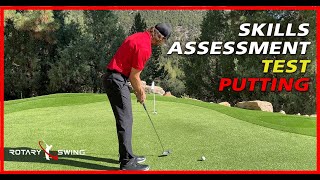
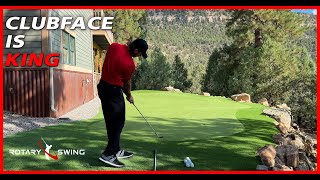


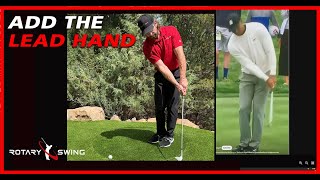











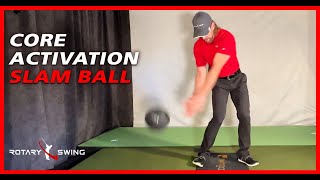





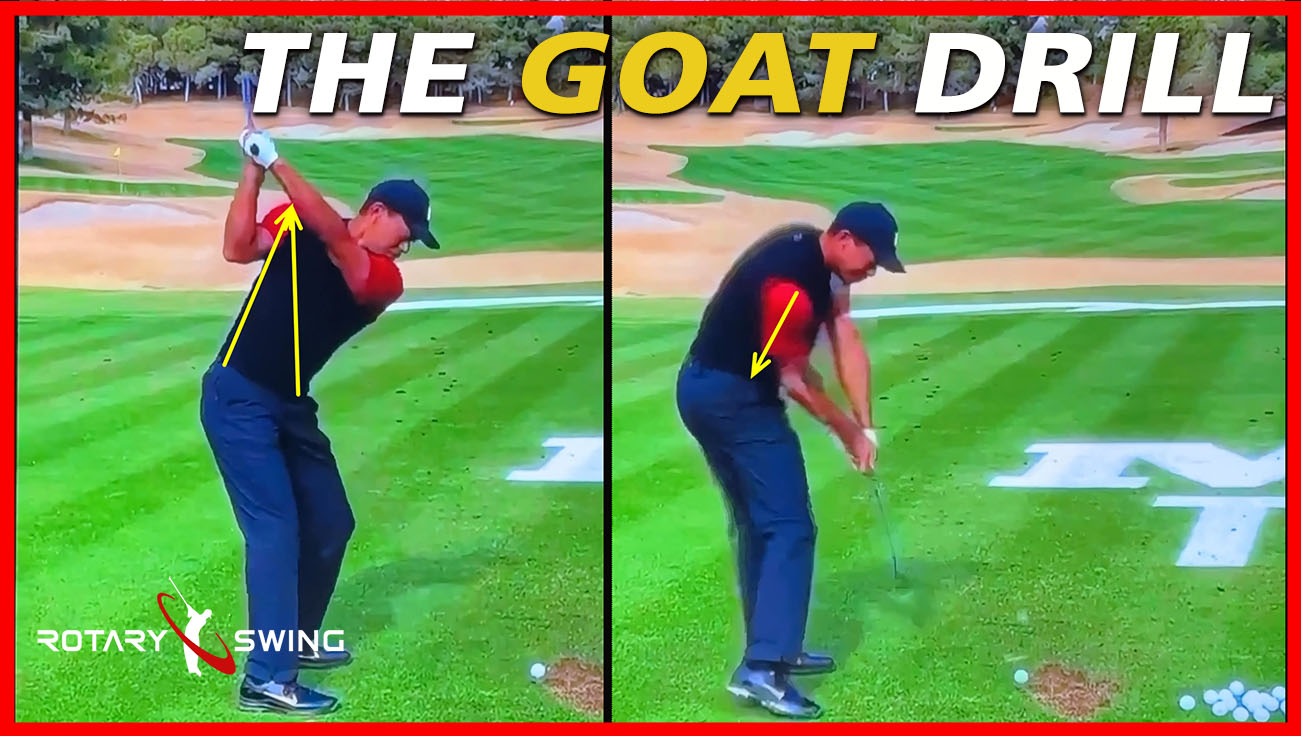


















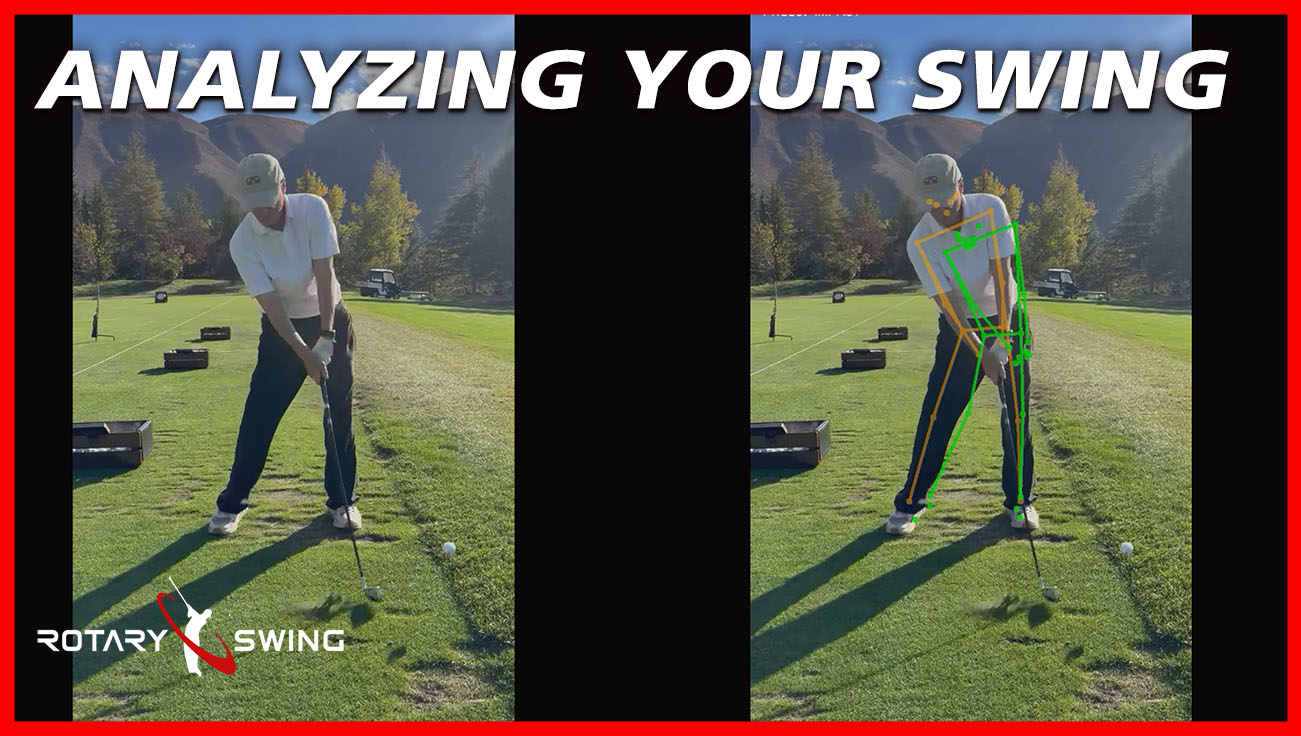








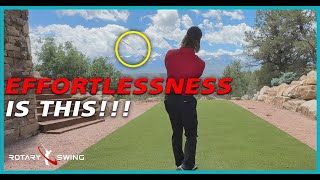
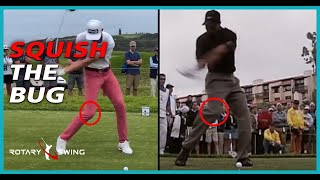











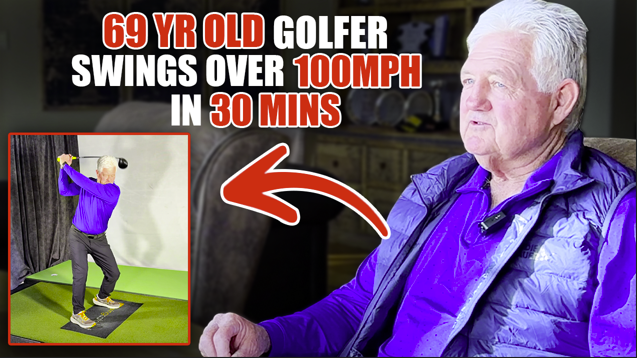





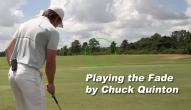











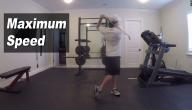

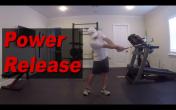

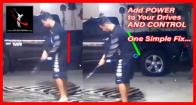
















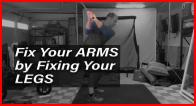










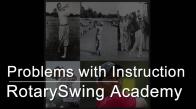




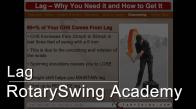



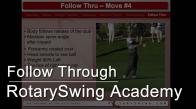


























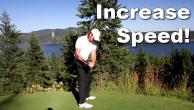




















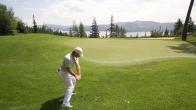





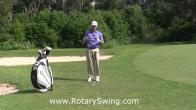



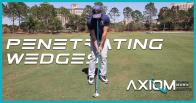





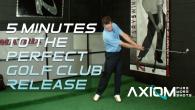



 We'll compare the student's swing (left) with Chuck's (right)
We'll compare the student's swing (left) with Chuck's (right) He has lost his spine angle & shifted to the right
He has lost his spine angle & shifted to the right Chuck's head and right hip have stayed on their lines
Chuck's head and right hip have stayed on their lines Compare the student's position at 9:00 (left) with Chuck's (right)
Compare the student's position at 9:00 (left) with Chuck's (right) Compare the student's lag (left) with Chuck's (right)
Compare the student's lag (left) with Chuck's (right) Broken down left wrist
Broken down left wrist Chuck's lag approaching and through impact
Chuck's lag approaching and through impact Compare the student's spine angle at address (left) to Chuck's (right)
Compare the student's spine angle at address (left) to Chuck's (right) The student stands up on the backswing moving away from the lines drawn at address
The student stands up on the backswing moving away from the lines drawn at address Chuck's head and face stay on the lines drawn at address
Chuck's head and face stay on the lines drawn at address Compare the student's position just after impact (left) with Chuck's (right)
Compare the student's position just after impact (left) with Chuck's (right)
